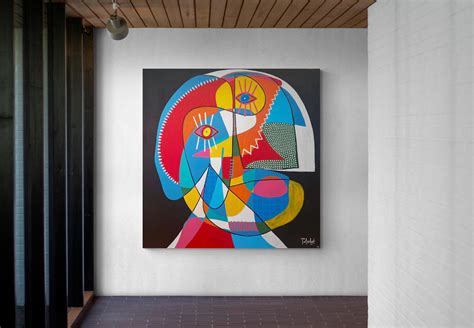
Contemporary Abstract Art: 21st-Century Artists, Styles, and Global Trends
Abstract art has never stood still. From Kandinsky’s early experiments to Pollock’s action painting and Rothko’s color fields, abstraction has constantly reinvented itself. In the 21st century, contemporary abstract art continues this legacy, combining traditional painting with digital tools, mixed media, and global perspectives. Today’s artists push the boundaries of abstraction, making it more diverse, experimental, and accessible than ever before.
Defining Contemporary Abstract Art
- Timeline: roughly from 2000 to the present day.
- Style: no single style dominates; instead, a wide range of techniques and philosophies coexist.
- Global Reach: abstraction is no longer centered in Europe or New York—it’s a truly international movement.
- Mediums: painting, sculpture, installation, digital art, and even NFTs.
- Themes: identity, technology, environment, and cultural hybridity.
Key Characteristics of Contemporary Abstraction
- Diversity of Techniques – from large-scale oil paintings to digital abstractions and AI-generated art.
- Cross-Media Experimentation – artists use video, photography, and found objects alongside paint.
- Personal Narratives – many abstract works explore identity, migration, or cultural memory.
- Environmental & Political Concerns – abstract forms used to reflect ecological or social themes.
- Global Dialogues – influences from Asia, Africa, Latin America, and the Middle East broaden the vocabulary of abstraction.
Leading Contemporary Abstract Artists
-
Gerhard Richter (Germany)
- Bridges abstraction and realism through his blurred squeegee paintings.
- Works like Abstract Painting (809-4) (1994) remain iconic and continue to inspire.
-
Julie Mehretu (Ethiopia/USA)
- Known for large, layered canvases combining architectural lines with gestural marks.
- Her works reflect migration, urbanism, and global complexity.
-
Cecily Brown (UK/USA)
- Combines abstract expressionist energy with figurative hints.
- Her vibrant canvases blur the line between chaos and control.
-
Mark Bradford (USA)
- Creates massive, collage-like abstractions using paper, rope, and everyday materials.
- His works often reflect social and political narratives.
-
Yayoi Kusama (Japan)
- Though often associated with Pop Art, her infinity dots and immersive environments are deeply abstract explorations of perception.
-
Contemporary Digital Artists
- Many artists now explore NFTs and generative abstraction, pushing painting into the digital realm.
Why Contemporary Abstract Art Matters
- Keeps the spirit of experimentation alive.
- Engages with modern issues like climate change, migration, and digital identity.
- Expands abstraction beyond the canvas into immersive environments and new technologies.
- Shows that abstraction remains a universal language, open to endless interpretation.
Conclusion
Contemporary abstract art proves that abstraction is not a closed chapter of art history but an evolving, living practice. Whether through Richter’s layered canvases, Mehretu’s architectural abstractions, or the rise of digital and NFT-based abstraction, the 21st century continues to expand what abstraction can mean. For artists and collectors alike, contemporary abstraction is both a continuation of tradition and a leap into the future.
Inspired by the pioneers of abstract art, my collection brings bold color, texture, and emotion to life. Each piece is designed to spark personal reflection and invite viewers into a unique visual experience.
https://emotionincolor.com/collections/original
